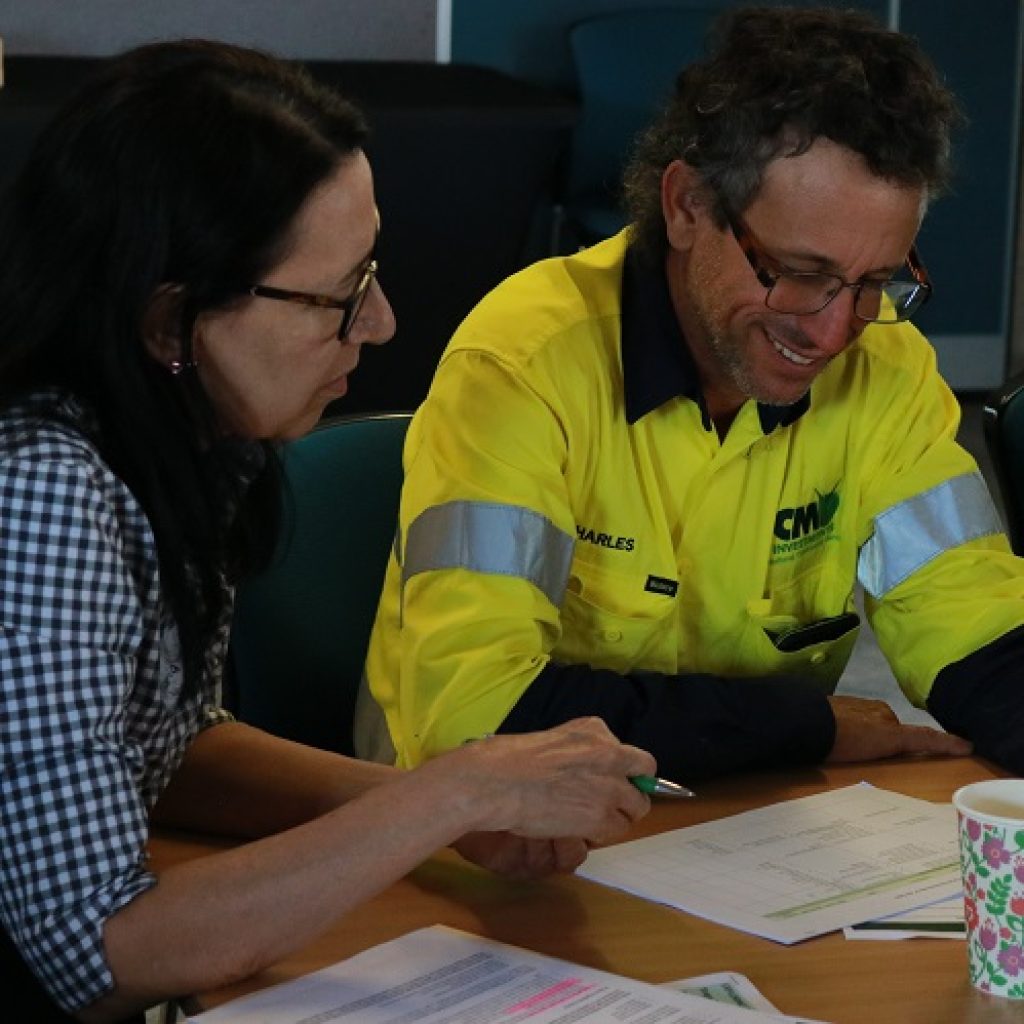ZUNI BOWLS TO FIX EROSION
MOSSMAN FARM BECOMES A DEMONSTRATION SITE
29 OCTOBER 2020
A Mossman farm has become a demonstration site for Zuni bowls – a solution to gully erosion.
Landholders, engineers, council officers and contractors are visiting the property to learn how to build the structures, where they work best and how they can be used more widely to fight erosion in Tropical North Queensland.
Terrain NRM’s Ruginia Duffy said two Zuni bowls had been built on the farm.
“They are a smaller-scale, cost-effective way for landholders to stop erosion from advancing,” Ms Duffy said. “These bowls follow on from work on an Atherton Tablelands farm last year, where smaller bowls were built and have settled into the landscape.”
Zuni bowls are a lining of rocks built into gully heads where there are abrupt vertical drops. They take their name from the Native American Pueblo people from the Zuni River Valley, who first developed and used the structures.
“These days, work starts with a bobcat and ends with shovels and crowbars,’’ Ms Duffy said. “The structures are carefully designed to prevent water from disturbing the soil any further. They work with the natural landscape – by mimicking the kind of forms found in creeks.”
The latest bowls are part of a larger project repairing flood damage in the Mossman region. Other parts of the project have included more traditional earthworks, rock work and tree-planting to stabilise creekbanks that bore the brunt of floods in the 2018-19 wet season.
The Mossman Integrated Catchment Repair Project is funded by the Queensland Government’s Natural Resources Investment Program.

Ms Duffy said RegenAG’s North American watershed specialist Craig Sponholtz had trained local earthmovers to build the bowls on the Tablelands last year and had led workshops with farmers on cost-effective ways to solve gully erosion problems.
“That was part of our erosion-control project in the Johnstone River catchment – now those contractors are training others to build Zuni bowls,’’ she said. “The aim is to increase the capacity of people, from landholders and private contractors to local government, to fix small-scale gully erosion that’s impacting farming, the land and water flowing to the Great Barrier Reef.
“In this case, the flood water from a creek was funnelling into a dam and the overflow had cut a channel into the land that was 20m long, up to four metres deep and continuing to erode. The top of the gully is where the water has the most energy so that’s where our first Zuni bowl went in – to take most of the water’s energy away by slowing it down. Another Zuni bowl was built five metres below.
“Over time the Zuni bowl features will assimilate into the surrounding landscape.”
Learn more about erosion control techniques.
RELATED NEWS
Improving water quality
 Elaine
Elaine
 January 22, 2025
January 22, 2025
Tree rootballs part of erosion solution
 Elaine
Elaine
 December 16, 2024
December 16, 2024
New $3.2 million project in Herbert catchment
 Elaine
Elaine
 November 26, 2024
November 26, 2024






























